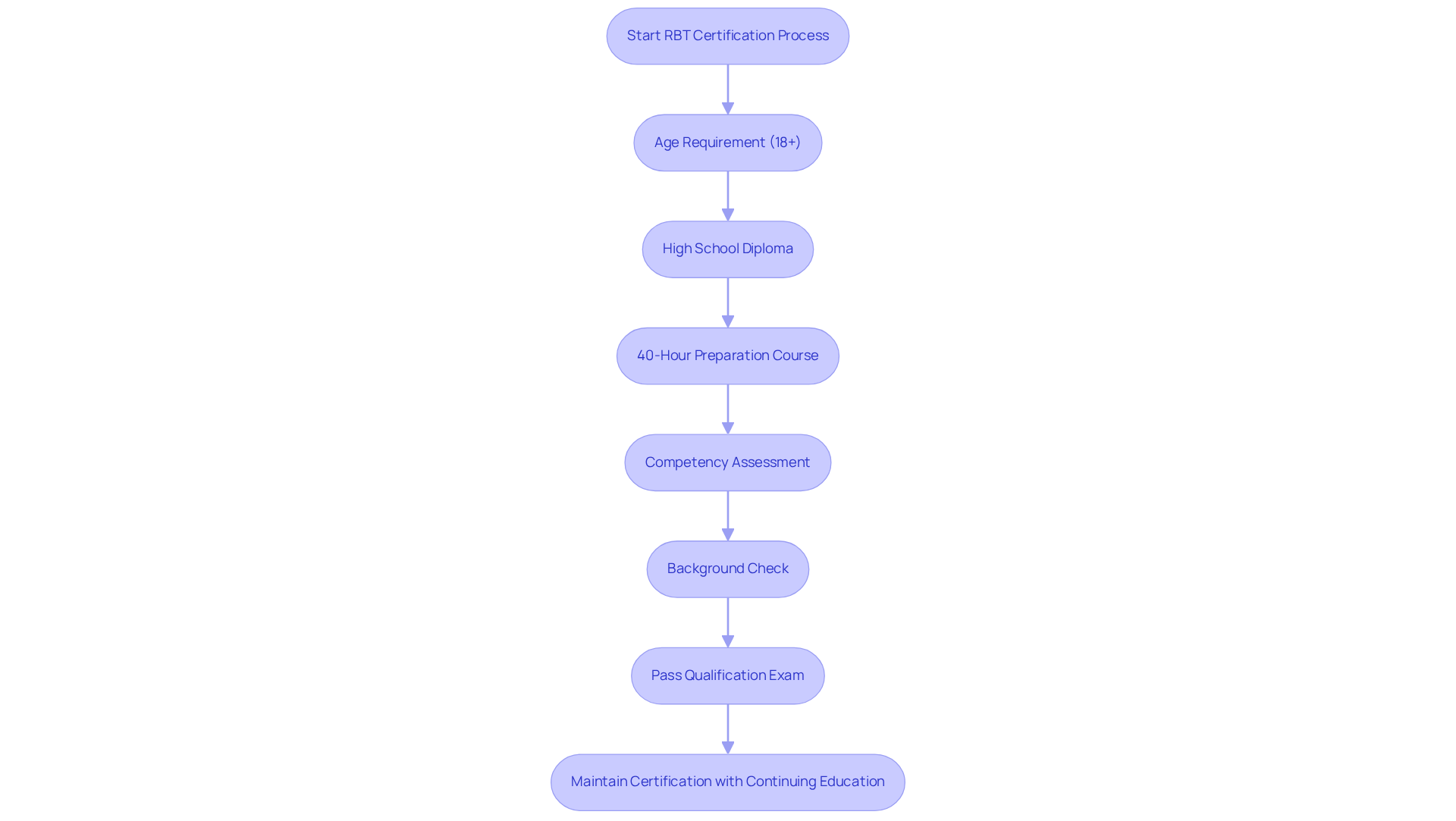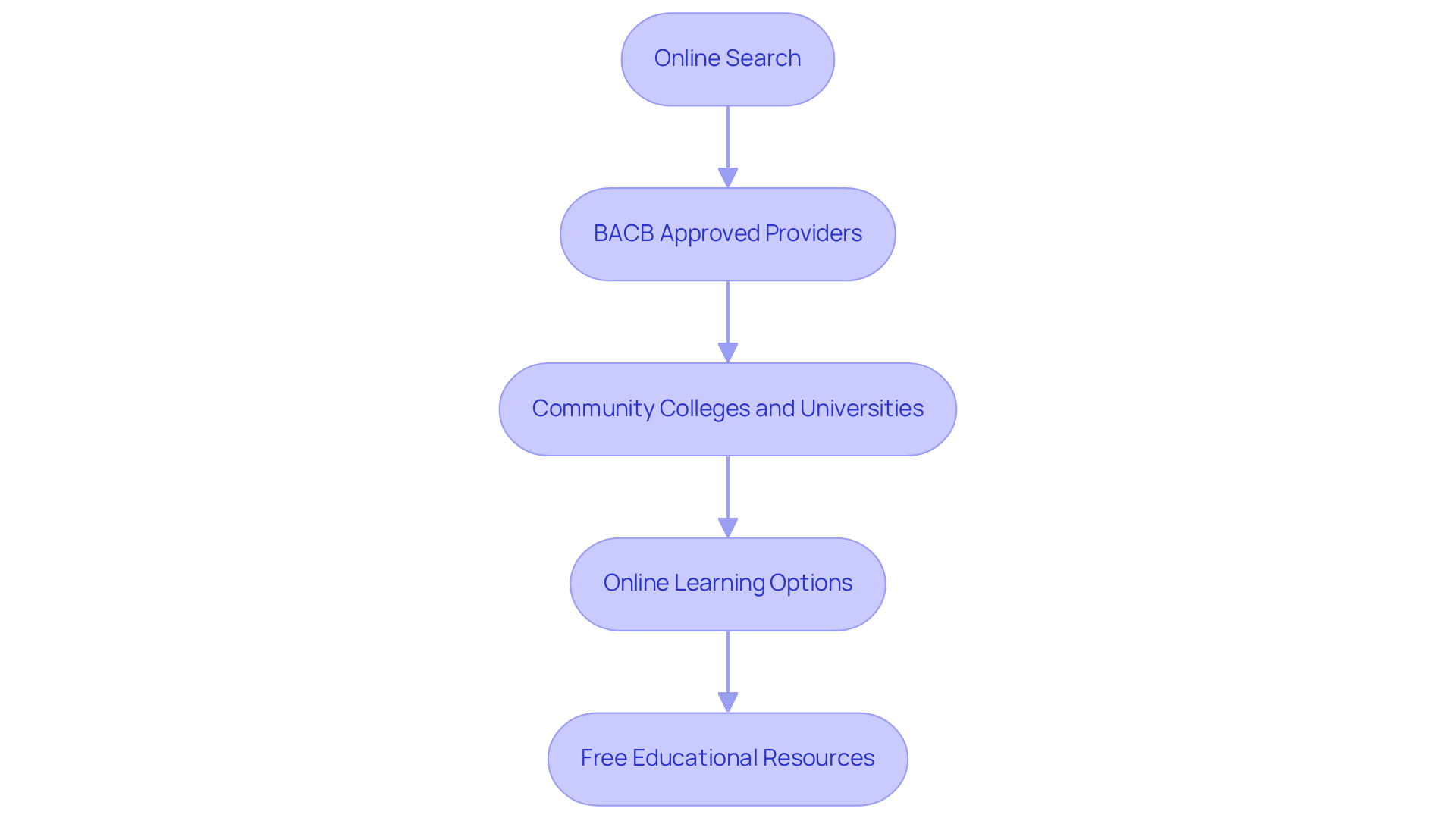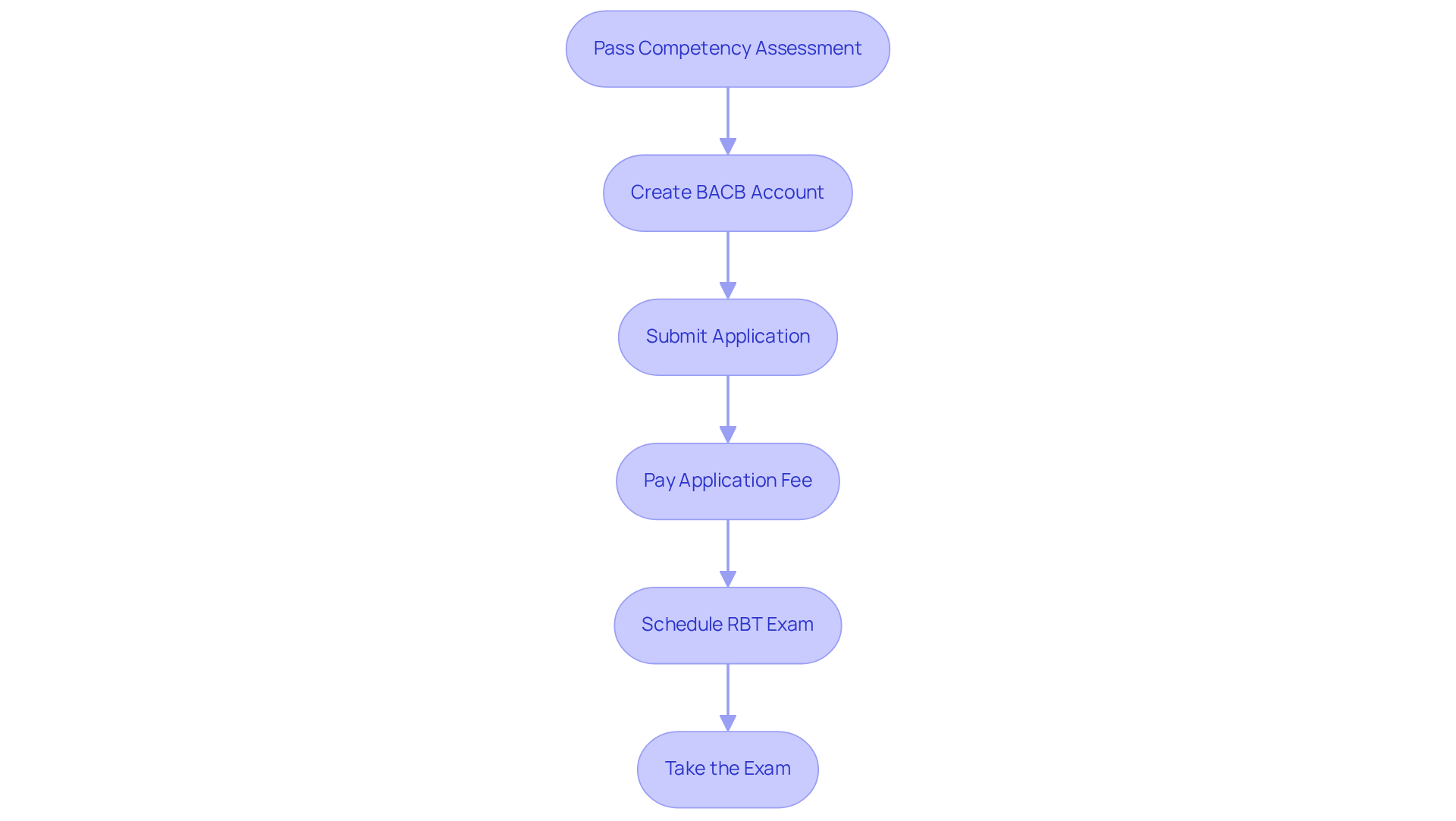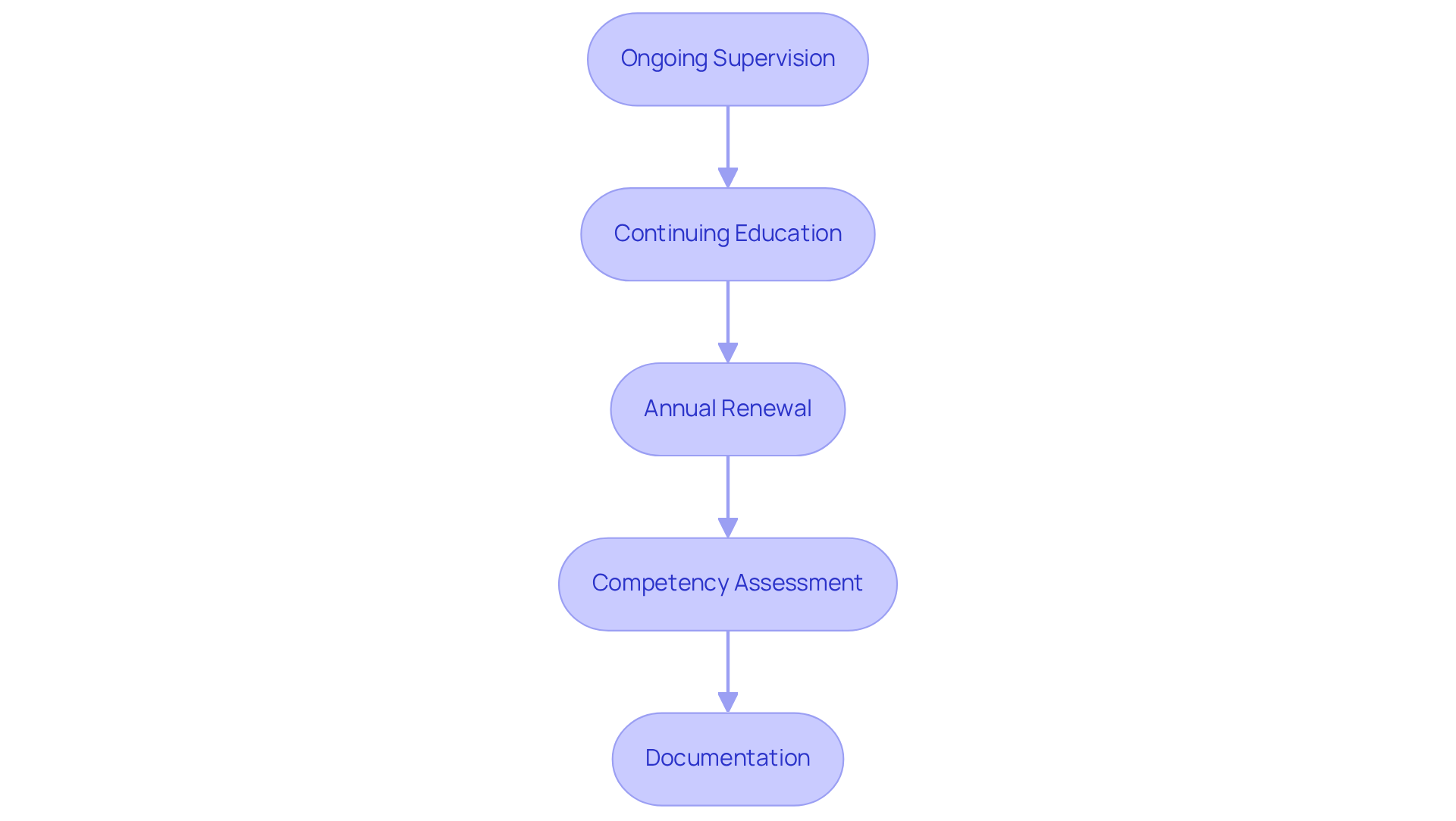June 21, 2025

To achieve RBT certification, candidates must complete a 40-hour preparation course, pass a competency assessment, and submit an application to the BACB, along with a background check and application fee.
Have you considered the importance of locating approved training programs? This step is crucial.
The necessity of ongoing supervision and continuing education cannot be overstated; these elements are vital to maintaining certification.
The article outlines these steps clearly, reinforcing the commitment required for this professional designation.
Navigating the path to becoming a Registered Behavior Technician (RBT) can appear overwhelming, particularly given the specific requirements and steps involved. With the demand for RBTs on the rise, grasping the certification process is essential for aspiring professionals eager to advance their careers in Applied Behavior Analysis. What critical steps must one undertake to not only obtain this esteemed credential but also sustain it in a rapidly evolving field? This guide delineates the fundamental actions necessary to secure RBT certification and excel in this fulfilling profession.
To become a Registered Behavior Technician (RBT), candidates must meet specific eligibility requirements set by the Certification Board (BACB). These requirements include the following:
Recent data shows that 83% of RBT candidates succeeded in their qualification exam, reflecting the growing interest in the field. RBT credentials hold significant value in Applied Behavior Analysis, enhancing career prospects and signaling competency to employers. Understanding these criteria is essential for potential candidates to efficiently prepare and manage their path toward . Moreover, RBTs must engage in at least 3 hours of continuing education focused on ethics annually to maintain their certification. After grasping these eligibility criteria, candidates should contemplate preparing for the course and competency evaluation to further their careers.

To locate RBT training programs near you, consider the following steps:
Additionally, remember that maintaining RBT credentials necessitates completing continuing education units (CEUs) every two years. By exploring these options, you can find a program that aligns with your schedule and budget, facilitating your journey toward RBT qualification.

To successfully complete the RBT certification process after your training, follow these essential steps:
By diligently adhering to these steps, you will be well on your path to acquiring your RBT certification, which is an essential credential in the expanding domain of Applied Analysis. Additionally, new RBTs can expect an average salary of $44,000 per year, making this a rewarding career choice.

To maintain your RBT certification, adherence to the following requirements is essential:
By following these guidelines, RBTs can ensure their certification remains active and that they continue to meet the evolving standards of the profession.

Achieving RBT certification is a structured process that opens doors to a rewarding career in Applied Behavior Analysis. Understanding the requirements, locating training programs, completing the certification steps, and maintaining credentials positions candidates for success in this growing field.
The essential requirements for RBT certification include:
Thorough preparation for the competency assessment is crucial, and there are various avenues for finding suitable training programs, whether through local institutions or online options. The steps necessary to complete the certification process—from application to examination—ensure candidates are well-informed at each stage.
Ultimately, pursuing RBT certification not only enhances career prospects but also contributes to the significant impact behavior technicians have on individuals and communities. As the demand for qualified professionals in this field continues to rise, taking proactive steps toward certification and ongoing education is crucial. Embrace the opportunity to make a difference while advancing your career by following the outlined path to RBT certification.
What are the eligibility requirements to become a Registered Behavior Technician (RBT)?
To become an RBT, candidates must be at least 18 years old, possess a high school diploma or equivalent, complete a 40-hour RBT preparation course, pass a competency assessment by a Board Certified Behavior Analyst (BCBA), and undergo a criminal background check completed within 180 days before applying.
Is proof of a high school diploma required during the application process?
As of 2025, applicants are no longer required to upload proof of their high school diploma during the application process.
What does the 40-hour RBT preparation course cover?
The 40-hour RBT preparation course includes essential subjects in Applied Behavior Analysis (ABA).
What is the competency assessment for RBT candidates?
The competency assessment is a test administered by a Board Certified Behavior Analyst (BCBA) that candidates must successfully pass after completing their training.
What does the background check for RBT candidates involve?
The background check requires candidates to provide identification documents and fingerprints and must be completed within 180 days before applying for approval.
How successful are candidates in passing the RBT qualification exam?
Recent data indicate that 83% of RBT candidates have succeeded in their qualification exam.
What ongoing education is required for RBTs to maintain their certification?
RBTs must engage in at least 3 hours of continuing education focused on ethics annually to maintain their certification.
Why is understanding RBT certification requirements important for candidates?
Understanding these criteria is essential for potential candidates to efficiently prepare and manage their path toward RBT certification, enhancing their career prospects in the field of Applied Behavior Analysis.
Our expert recruitment strategies and AI-driven sourcing ensure that you receive top-notch candidates quickly, without compromising on quality. Whether you’re looking for BCBAs, Clinical Directors, or RBTs, we’ve got you covered.